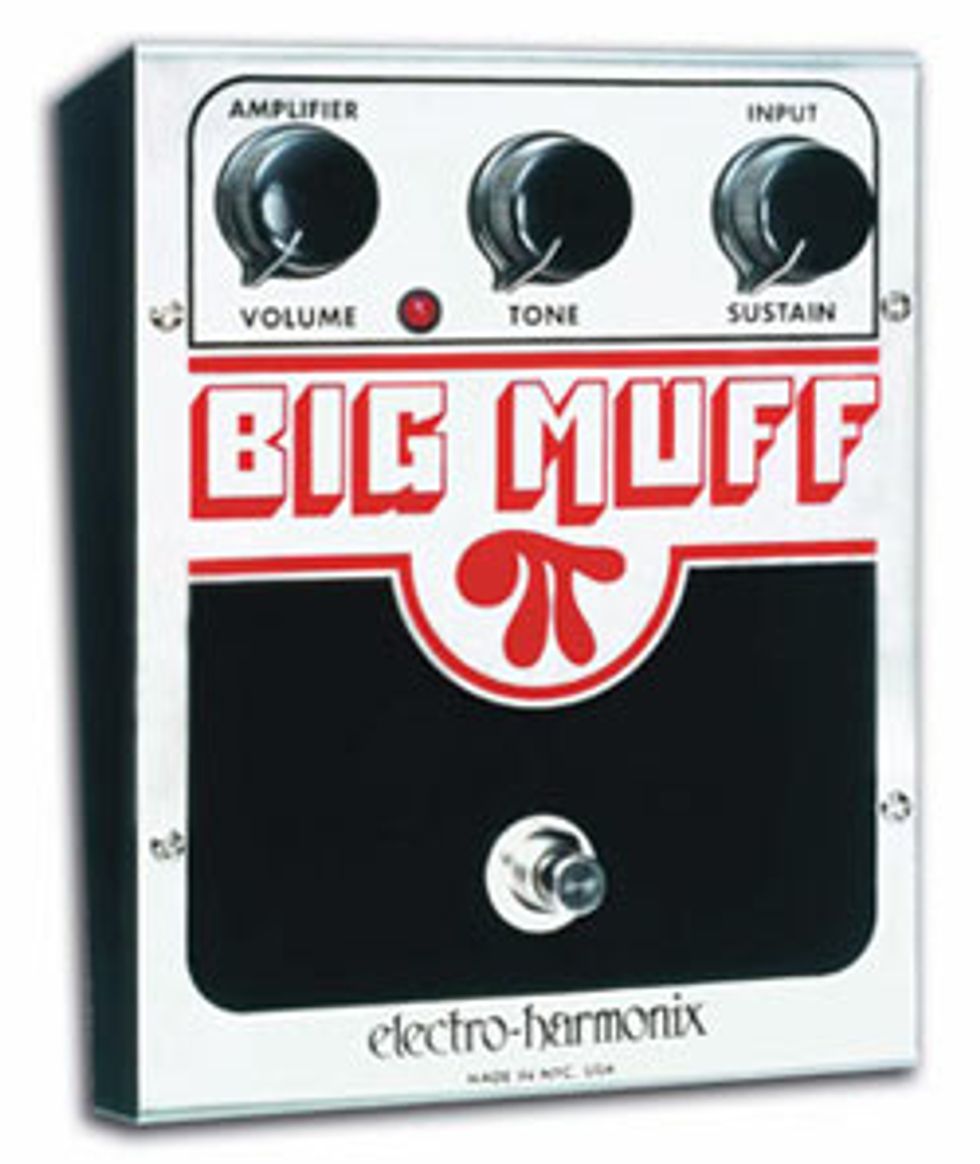--> If you’re not careful in constructing your tone, misplaced/misused pedals can kill your sound. Now then, all you steely-eyed guitar killers, what have we learned about our beloved
 | |
|
First off, we should have a good understanding of the terms overdrive, distortion, gain, and volume. As luck would have it, all of these aspects of our guitar sound are closely related and overlap somewhat. As a result, they are often incorrectly used to refer to one another. If you’re still a little hazy on the differences, please consult our last four discussions (available online at premierguitar.com). But if you’re short on time like the rest of us, the following is a quick rundown.
Overdrive is essentially the result of pushing a signal above “normal” limits. This can cause distortion, an increase in volume, and, in technical terms, an increase in gain. The confusion among the terms is becoming understandable now, isn’t it?
Distortion occurs when something causes the signal to bend or square off from its original shape or amplitude. Remember, amplitude is the “height” of the signal, often measured in a voltage. Whatever is causing the distortion can be overdriving the tubes or components. These can be wave shaping devices such as pedals designed for this purpose or even the speakers when pushed to their limits. It should be noted that most distortion is not very musical. In most cases, the more distortion the less original tone, which is why true tube amp distortion tends to sound better than the pedalderived kind. That is the main problem guitarists face with distortion pedals – they stray too far from the original tone of the guitar and amp. Keeping the tone intact is difficult but pedals work great for achieving distortion at less than ear-damaging levels – see the trade off?
Gain interplays with volume, overdrive and distortion. It is usually a function of a circuit, whether it is an amp, mixing console, etc. Gain is usually referenced at the beginning of a circuit and can increase the volume of the signal, up to a point. After the operating parameter of the circuit is reached, the signal will begin to become distorted – a classic example of overdrive. Continuing to add gain at this point will not increase the loudness but will add to the amount of distortion. This is often described as “thick.”
Volume simply refers to loudness, period. It doesn’t matter if it is a clean or distorted signal – loud is loud. Pushing the pre or post-volumes may cause overdrive, which then gives us distortion. Around and around we go.
In parts two and three we looked at some signal waveforms on a osciloscope. Review these photos to get a good “visual” representation of what they represent. Part two also covered the communication aspect of the music we play – I cannot over emphasize how important this is in relation to overdrive and distortion. It is paramount to remember that less is more in a band situation. When you are playing with a band the guitar signal has to “fit in the mix” and not compete with the vocals and cymbals. When practicing alone you can distort all you want – and it sure sounds good – but use that same amount of crunch with the band and I can assure you the band will sound like hammered mud.
Part three spoke about the ins and outs of pedals, and our love/hate relationship with them. Pedals can be great tools to achieve heavy distortion at lower volumes, but as the volume rises the sound starts going south. Pedals have an inherent “tone robbing” aspect and often take your original tone far from home. This too is not always a bad thing, but it is a pity to have the tone of a $3000 guitar killed by a $100 pedal. Pedals must be kept in their proper place as you work on achieving killer tone.
Our fourth article covered speakers and hopefully you did your homework and checked out the speaker websites – if not, “git ta steppin’!” There is a ton of really great information on those sites. What is your tone worth? Do you want to sound really good or just be average? You have to figure out which type of speaker, amp, pedals and guitar work for you – not me, Eddie, Ted, Dan, Zakk, Stevie or Chet. You have to work this out – it’s your tone.
Gary "Sarge" Gistinger
President, Creation Audio Labs, Inc.
creationaudiolabs.com

